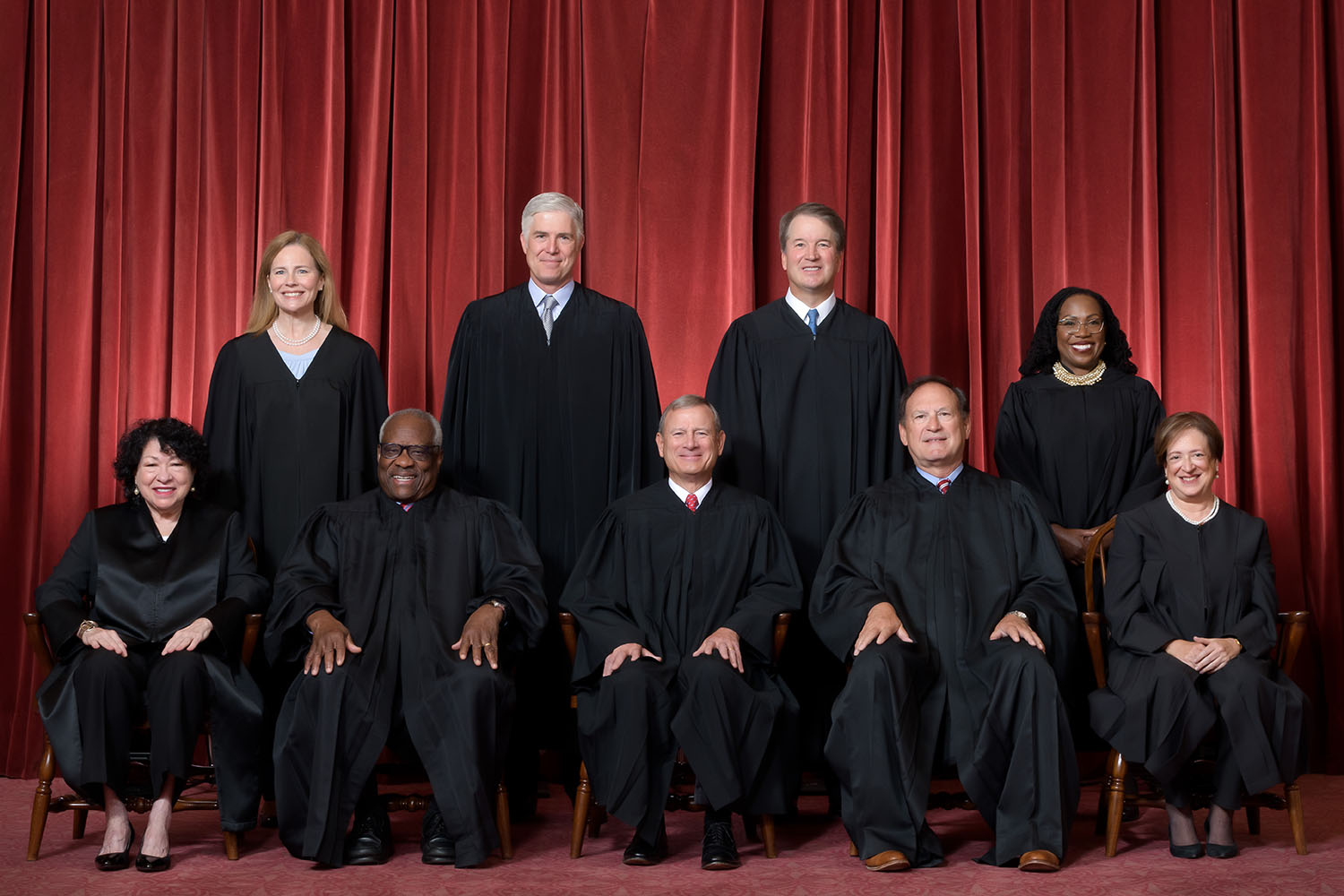The polarization in the United States political scene today is no secret. Those general feelings have been extended to the judicial system as well, especially in the last couple of years. Decisions like the Dobbs v. Jackson decision last summer which overturned Roe v. Wade have caused division and undermined confidence. Even President Biden has described the Supreme Court and its decisions as “radical,” “extreme” and “not normal,” according to White House records and AP News.
What should the ordinary American’s reaction be? It often seems like people will support the courts when they make decisions that agree with their policy preferences and be quick to bash the courts when they do not. Should people be more consistent in their reactions to judicial decisions?
According to professor Scott Peters, the head of the Department of Political Science here at UNI, people often react differently to courts now because of people’s perceptions of what a judge should be. “The courts are political institutions. The decisions they make are political. There’s often a desire to treat courts differently as legal institutions that are somehow outside of politics … If you ask someone what makes a good judge, they’ll probably say something like being independent and impartial … To the extent that judges break from those conceptions of what people think good judges are, they put their own legitimacy at risk.”
He also noted that federal judges are often primarily appointed based on their ideological views. This causes people to view them as not being impartial. This has led to sharper divides and more polarized decisions.
Part of the conflict has been between the judicial system and the administrative arm of the executive branch. The federal legislative process was designed to not move too fast and make sweeping changes. Especially in such polarized times, it can be difficult for a president to pass laws promised to voters. So, the president will often use executive action to try to move forward. When a president oversteps his executive authority, it brings conflict with the judicial branch. One arena where this has played out has been in federal district courts where a judge can file an injunction on a federal policy passed through executive action.
“Regardless of whether it’s an injunction against the Democratic or Republican policy, to be able to sort of forum shop, find one ideological judge and have that judge stop national policy in its tracks. It’s probably not a great idea,” Peters said. That is a valid concern. Should one federal district judge be able to put a federal policy on hold if it does not directly violate individual rights?
The Constitution creates a system of checks and balances on the three branches of government. When the overstep of administrative authority is checked by the judicial branch, people often react to the judicial branch’s decision instead of the overstep that started it. Many of the major cases decided by the Supreme Court in the last two years have been related to the power of executive agencies. In Biden v. Nebraska, the Supreme Court ruled in a 6-3 decision that the Secretary of Education did not have the right to forgive student loans under the Higher Education Relief Opportunities for Students (HEROS) Act. Two separate decisions in the last two years limited the authority of the
Environmental Protection Agency (EPA). And in January of 2022, the Supreme Court blocked the Occupational Safety and Health Administration (OHSA) from passing an Emergency Temporary Standard of a vaccine-or-test mandate for large businesses.
If both the executive and judicial branches seem to be seizing too much authority, then the branch to put a check on both should be the legislative branch. The Constitution gives Congress some regulatory authority over the Supreme Court and especially over lower federal courts. Constitutional amendment would be a way to alter the Court. There have been ideas proposed to change parts of the Court’s structure, including term limits.
One idea that generated controversy was a plan to “pack” the Supreme Court. In 2021, Democrats proposed legislation to increase the number of justices from nine to 13. There have been attempts to get the bill passed since, but it has not happened, in part due to reluctance by Biden.
The last time there was a serious push to expand the Supreme Court was under Franklin Roosevelt. The Court opposed some of Roosevelt’s New Deal legislation, so he formulated a plan to appoint a new Justice for every Justice over 70 years of age, which at the time would have allowed him to appoint six new justices. The plan failed, as the legislation was eventually tabled in the Senate. It faced a lot of opposition then as a plan to simply create a court that would rubber-stamp his decisions.
This is similar to the push to expand now. Democrats feel that since Republican-appointed justices outnumber Democrat-appointed justices 6-3, four more justices would balance the Court out in their favor. The problem is this essentially destroys the Court’s independence and makes it a third branch of legislation for the majority party. If Democrats expanded the Court to switch its ideological positions, why wouldn’t Republicans do the same thing if they won the majority in future elections? In a process like this, it’s conceivable the Court could grow exponentially and essentially lose its function as a check on the other two branches.
There is a danger in making sweeping changes to institutions for the purpose of immediate satisfaction. One side wants a law passed, and so they legally change the rules of the game. This is a concern to political scientists, according to Peters. There are two risks. One is in pushing things to the max and fixing the rules and boundaries to give one party such an advantage as to essentially create a one-party State. Peters remarked that we’ve seen this play out in countries around the world. “If we look at countries like Russia or Turkey or Poland or Hungary, what we see in those countries is parties taking power legally, being very popular, and then once they’re in power and they have a large majority, changing the rules to favor their side and make it harder for the other side to win. And so, this dynamic can be a bad thing for democracy overall.”
The other is in the back-and-forth pushing on the limits of power. Peters pointed out, “There are some who look at the health of democracies and sort of trends and say that that kind of exercise of power without forbearance is not a good thing because what it does is it means that when the other party gains control, they’re not going to exercise any sort of self-restraint … so you’ll have this sort of seesawing back and forth.”
Even though some things may technically be legal if one side pushes the limits, there are ethical concerns and reasons why doing so may be harmful in the end. Making sweeping institutional changes can be reckless and have massive consequences.
While some people look at the Supreme Court and our judicial system as a whole as having too much power, it is often operating as the check it should be on oversteps of the executive branch and administrative agencies. The increasing division in political opinion and policy is unlikely to go away anytime soon, including in courts, but making sweeping changes could potentially increase that division and create more problems down the road. While we may not always agree with judicial decisions, the American system of government has proven to be arguably the most successful in history at guaranteeing rights and freedom to its citizens. It has balanced out before, and it still works today.








